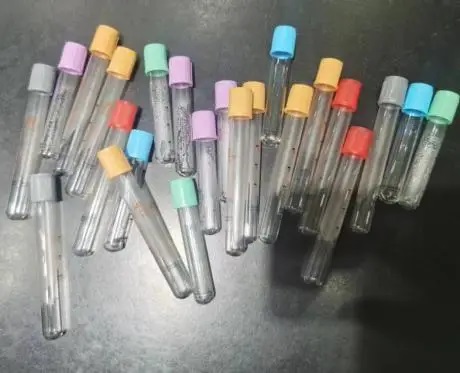
Blood collection tubes are essential tools used in healthcare settings for obtaining blood samples for diagnostic testing. These tubes come in various types, each designed to serve a specific purpose in preserving the integrity of blood samples and facilitating accurate laboratory analysis. In this article, we will explore the different types of blood collection tubes commonly used in clinical practice, their additives, and their specific applications.
Serum Tubes
Serum tubes, also known as clot activator tubes or red-top tubes, are used for obtaining serum samples. These tubes do not contain any anticoagulants but typically have a clot activator, such as silica or glass particles. After blood collection, the tubes are allowed to stand undisturbed to allow the blood to clot. Once the clot forms, the tubes are centrifuged to separate the serum from the clotted blood. Serum tubes are used for various tests, including chemistry panels, hormone assays, and serological testing.
EDTA Tubes
Ethylenediaminetetraacetic acid (EDTA) tubes are used for collecting whole blood samples for hematological testing. EDTA acts as an anticoagulant by binding to calcium ions, preventing blood from clotting. These tubes are commonly seen with lavender or purple-colored tops. They are used for complete blood counts (CBC), blood typing, and other tests that require whole blood analysis.
Heparin Tubes
Heparin tubes contain heparin, an anticoagulant that inhibits clotting by activating antithrombin, a natural clotting inhibitor. These tubes are usually green-topped or have a green stripe. Heparin tubes are used for tests such as arterial blood gas analysis, plasma-based chemistry tests, and some coagulation assays. It’s important to note that heparin can interfere with certain tests, so it is essential to follow the specific instructions for each assay.
Sodium Citrate Tubes
Sodium citrate tubes are used for coagulation testing, including prothrombin time (PT) and activated partial thromboplastin time (aPTT). These tubes contain a fixed concentration of trisodium citrate, which acts as an anticoagulant by binding calcium ions and inhibiting the clotting process. Typically, these tubes have a blue top or a blue stripe.
Fluoride Tubes
Fluoride tubes, often referred to as gray-top tubes, contain sodium fluoride and potassium oxalate. These additives act as anticoagulants and preserve glucose levels in the blood by inhibiting glycolysis. These tubes are primarily used for glucose testing, such as fasting blood sugar (FBS) or oral glucose tolerance tests (OGTT).
Blood Culture Bottles
Blood culture bottles are specialized containers used for collecting blood samples to detect and identify microbial infections in the bloodstream. These bottles contain specific culture media that promote the growth of microorganisms. Blood culture bottles are available in aerobic and anaerobic variants, and they are typically used in pairs to increase the chances of detecting pathogens.
Understanding the different types of blood collection tubes is crucial for healthcare professionals involved in specimen collection and laboratory testing. Each tube type serves a specific purpose, ensuring the preservation of sample integrity and facilitating accurate analysis. By selecting the appropriate tube based on the required tests, healthcare providers can ensure reliable diagnostic results and improve patient care.

















